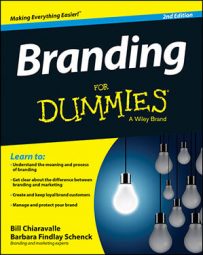You will need a positioning statement to build your brand. As soon as you’re clear about your customer profile, your place in your competitive environment, and the point of difference that sets you apart and provides customers a reason to buy from you and you alone, you’re ready to write your positioning statement.
Your positioning statement defines the niche that only your offering fills in the marketplace. It isn’t a public announcement; rather, it’s an internal marketing compass. After you establish your positioning statement, use it within your company to guide all your branding and marketing communication efforts.
Before writing your positioning statement, answer these questions:
Is your point of difference unique and hard for a competitor to duplicate?
Do your distinctions or differences truly matter to your customers?
Does your offering sync well with economic and cultural trends?
Will customers believe your claims about your offering? Can you support or prove your claim?
If you can answer “yes” to these questions, sharpen your pencil or hit your keyboard to write a positioning statement covering the following points:
Your customer profile
Name of your company or product
Your business description
A summary of your point of difference
Here’s a positioning statement template to get you going:
For [a description of your target audience or ideal customer ], [the name of your brand ] is the [your point of distinction, for example, the only specialist in, the highest-rated] [a description of your offering, for example, micro-home builder, hometown brewpub] that provides/delivers/promises [a description of the value and benefit you promise and deliver to customers] because only [the name of your brand] [a description of facts that give people a reason to believe your positioning claim].
After writing your positioning statement, evaluate its accuracy by asking
Is it believable?
Is it consistent with what people who know your business believe to be true about you, the way you operate, and the benefits you deliver?
Can you consistently deliver the distinct attributes as they’re stated?
Can you package and deliver your point of difference with such consistency that every single time customers encounter your brand, your distinction is reinforced and the experience reminds customers of why they chose and remain loyal to your brand?
Steer clear of these positioning landmines:
Don’t try to claim a position already held by another brand.
Don’t base your position on a point of difference you can’t protect. For instance, don’t base your position on having the lowest price, because a competitor can always best you on that front.
Don’t build your position around an attribute you can’t control, such as being the “only provider of XYZ service.” Unless you establish a barrier to entry by competitors through a license or other protection, you leave yourself vulnerable to having the very attribute you built your brand upon eroded by a quick move by a new player in your game.
When your positioning statement passes these tests, you’ve found a place to build your brand. Congratulations! Now you can start putting your brand promise and brand definition into words.

